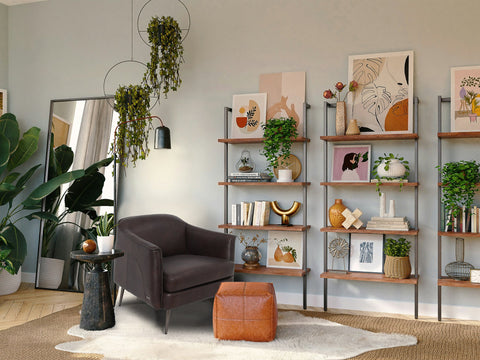There’s a quiet yet powerful transformation that happens when a woman begins to settle into a space. She arranges a corner just so, chooses a certain fabric for its softness, lights a candle not just for scent but for feeling. This isn’t just decorating—it’s nesting.
Rooted in psychology, nesting is often described as an instinctive behavior, particularly common among women during significant life events such as pregnancy, moving, or starting anew. But far beyond its biological origins, nesting is a deeply emotional process: it’s the act of creating safety, control, and connection through physical space.
At its core, nesting is about healing, identity, and empowerment.
A Need for Control in Times of Change
Whether it’s a new baby on the way, the experience of displacement, or a major life shift, nesting often appears during times of transition. For many women, creating a home becomes a way to reclaim a sense of stability and control. Choosing furniture, organizing a kitchen, or designing a living space allows them to shape an environment where they feel grounded.
This is especially true for women who have experienced loss, migration, or upheaval. Nesting becomes a tool for emotional resilience—a way to say: “This space is mine. I belong here.”
Beauty as Emotional Regulation
Psychologists have long linked aesthetics to mood. A home filled with natural light, calming textures, and harmonious colors doesn’t just look good—it helps the nervous system relax. Women often seek beauty in their homes not out of vanity, but as a form of emotional nourishment.
The soft grain of a wooden table, the gentle curve of an armchair, the luxury of a natural stone top—these are more than design choices. They are sources of peace and affirmation. A beautiful home says: “I am worthy of comfort.”
The Home as a Reflection of Self
Nesting also speaks to a woman’s identity. The way she shapes her environment reflects how she sees herself—and how she wants to be seen. A warm, inviting space communicates generosity. Clean lines and soft lighting may reveal a love for calm and order. Personal touches—photos, heirlooms, or even a uniquely shaped coffee table—tell a story.
In this way, the home becomes an extension of the self. And furniture? It’s not just functional—it’s emotional architecture.
Nesting as a Form of Care
Perhaps most importantly, nesting is an act of care. Women build nests not only for themselves but for their loved ones—for children, partners, and guests. A well-designed home nurtures relationships, holds space for rest, and becomes a backdrop for life’s most meaningful moments.
At Luxana Home, we understand that furniture is more than décor—it’s part of a woman’s emotional language. Every curve, texture, and finish is selected to support the deeper human need to feel safe, seen, and at peace. Because in the end, the act of nesting isn’t just about where we live. It’s about how we live—and how we love.



Comments (0)
There are no comments for this article. Be the first one to leave a message!